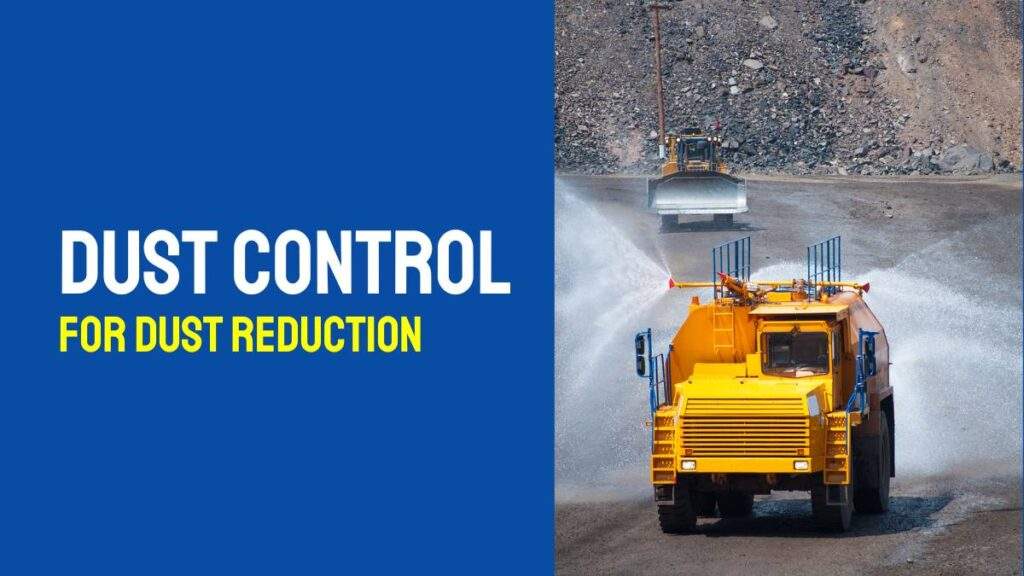
Dust control is essential for maintaining a secure and productive workplace in the fertilizer sector. The health of workers, the efficiency of equipment, and overall production can all be negatively impacted by dust created during the handling and processing of fertilizer. Therefore, it is crucial to develop efficient dust management techniques. In this article, you’ll look at the importance of fertilizer dust control and discuss several dust-reduction strategies.
We will also discuss more particular terms like organic fertilizer coating, coloring for potash, fertilizer granulating aid, anti-dust agent supplier, and fertilizer dust management.
Dust Control’s Importance for the Fertilizer Industry
Dust control plays an important role in the fertilizer industry. Fertilizer production and handling processes generate fine particles that can pose health and safety risks to workers and the environment. Effective dust control measures help reduce these hazards by reducing airborne dust levels, preventing respiratory problems, protecting equipment from damage, and reducing the risk of explosions. Proper dust control ensures a safe working environment, compliance with regulations and improved overall productivity in the fertilizer industry.
Employee Health and Safety:
Dust in fertilizer manufacturing facilities may put workers in danger while at work. The inhalation of fertilizer dust can cause allergic reactions, eye discomfort, and respiratory issues. Long-term exposure to some forms of fertilizer dust, including hazardous chemicals or toxic substances, can negatively affect one’s health. To preserve employees’ health and well-being and provide a safe workplace, it is crucial to implement appropriate dust management techniques.
Regulatory Compliance:
The fertilizer sector must install dust control measures per environmental rules and worker safety standards. To reduce the risks of dust emissions, fertilizer firms must abide by these requirements. Regulator rules that are not followed may incur fines, penalties, and legal repercussions. Companies that produce fertilizer show their dedication to legal compliance and ethical business practices by prioritizing dust control.
Efficiency and equipment maintenance:
Dust collection can hurt the performance and longevity of machinery and equipment used in the fertilizer industry. Dust can block filters, harming motors and preventing equipment from operating effectively. Regular cleaning and maintenance are necessary to save downtime, prevent equipment problems, and extend the lifespan of machinery. Implementing dust management strategies reduces the likelihood of equipment failure and ensures optimal operational efficiency.
Numerous Methods in the Fertilizer Industry to Reduce Dust
Control of Fertilizer Dust:
Dust Collection Systems: By installing baghouse filters or cyclone separators in fertilizer processing plants, it is possible to efficiently capture and remove airborne dust particles and provide a more hygienic working environment.
Wet Scrubbers: By employing water or chemical solutions to trap and remove airborne particulate matter, wet scrubbers can assist in managing dust emissions.
Adding color to potash:
A popular potash fertilizer can produce a lot of dust when handled and transported. The coloration of the potash with a dye or pigment is one efficient method of reducing dust. This procedure lowers dust emissions and makes it easier to recognize and also distinguish the treated product.
Aid for granulating fertilizer
To minimize dust production, fertilizer granulating aid like binders or coating agents might be utilized throughout the fertilizer manufacturing process. These tools assist in grouping the small particles into larger granules that are less likely to become airborne.
Suppliers of anti-dust agents:
Access to specialist products created to reduce dust difficulties in fertilizer can be obtained by working with reliable anti-dust agent suppliers. Moreover, To efficiently reduce dust emissions, these substances can be used at several points in the handling and also manufacture of fertilizer.
Coating for organic fertilizer:
When applied, organic fertilizers, which are frequently in a powdered or granular form, can create dust. While maintaining the fertilizer’s nutritious content, dust emissions can be reduced by applying a suitable organic covering. Additionally, coatings can improve fertilizer effectiveness and the regulated release of nutrients.
Conclusion
The fertilizer business prioritizes dust control to protect workers’ health, preserve equipment performance, and reduce environmental effects. Dust generation and emissions can be greatly decreased by using a variety of approaches, such as dust collection systems, wet scrubbers, and granulating aids. Dust control efforts are further improved by using potash coloring, collaborating with anti-dust agent vendors, and investigating organic fertilizer coating. In the fertilizer business, putting dust control measures first increases workplace safety and encourages sustainability. Controlling dust correctly can improve operational efficiency, foster a healthier work environment, and also contribute to a cleaner, greener future.




More Stories
5 AI Tools to Save You Time in 2025: Your Shortcut to a Stress-Free Life
Heat Warriors: Difference Between Refractory Bricks and Insulation Bricks
Different Types of Eco-Friendly Fertilizers: An Overview